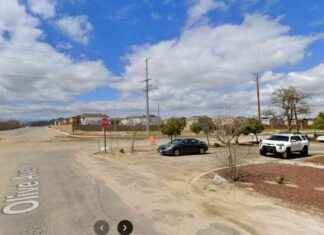The January submarine expedition dived into the Atacama Trench created by the collision of two tectonic plates within the eastern Pacific Ocean.
Ulloa, director of the Millennium Institute of Oceanography, at the University of Concepcion told AFP that they managed to “take humans into the trench where none other human beings had been before.”
American explorer Victor Vescovo joined him and Millennium assistant director Ruben Escribebano for the 12-week trip off Chile’s northern coast. They traveled 3,650 miles in the trench that stretches up to Ecuador.
Vescovo broke the record in 2019 for the deepest submerged dive. They posted video and images of their expedition saying that they had seen “extraordinary marine life.” “
Atacama Hadal was at 100 meters depth when it reached pitch black darkness. Crew members were limited in their vision to what the submarine’s powerful LED light could see.
Amazing examples of deep-sea life were found further down.
Ulloa said, “We found geological structures, and there we saw an unusual type of holothurians, or translucent sea cucumbers like jelly that we hadn’t recorded, and they were most likely new species.”
He said that he also found bacterial communities that fed on inorganic and chemical compounds that were not known to exist in the Atacama Trunk. That opened up many questions, including: What are these compounds? They are what kind of bacteria? We don’t know, so we will have to go back.
Amphipods were also discovered in the expedition. These crustaceans are closely related to shrimp and were scavenging crustaceans. In 2018, they were also discovered in the same area in an unmanned expedition.
“Incredibly ambitious project.”
The Atacama Trench, also known as Peru-Chile Trench, is located where the South American and Nazca tectonic plates meet. This area has seen many tsunamis and earthquakes.
Ulloa stated, “We will place three sensors on South American Plate and two more on Nazca Plate to determine how the oceanic floors are deformed.”
At the moment, these sensors are only available on land.
These devices will enable scientists to see where energy is being generated in areas that have never experienced an earthquake. This will help them predict the location of the next temblor.
Ulloa said that the project is “amazingly ambitious” and that it is “the largest underwater geology experiment here in Chile.”
The sensors will be installed in the second half this year.
“There is a lot interest from the international community in putting more sensors into this region to study all processes associated with collision of these two plates.”






